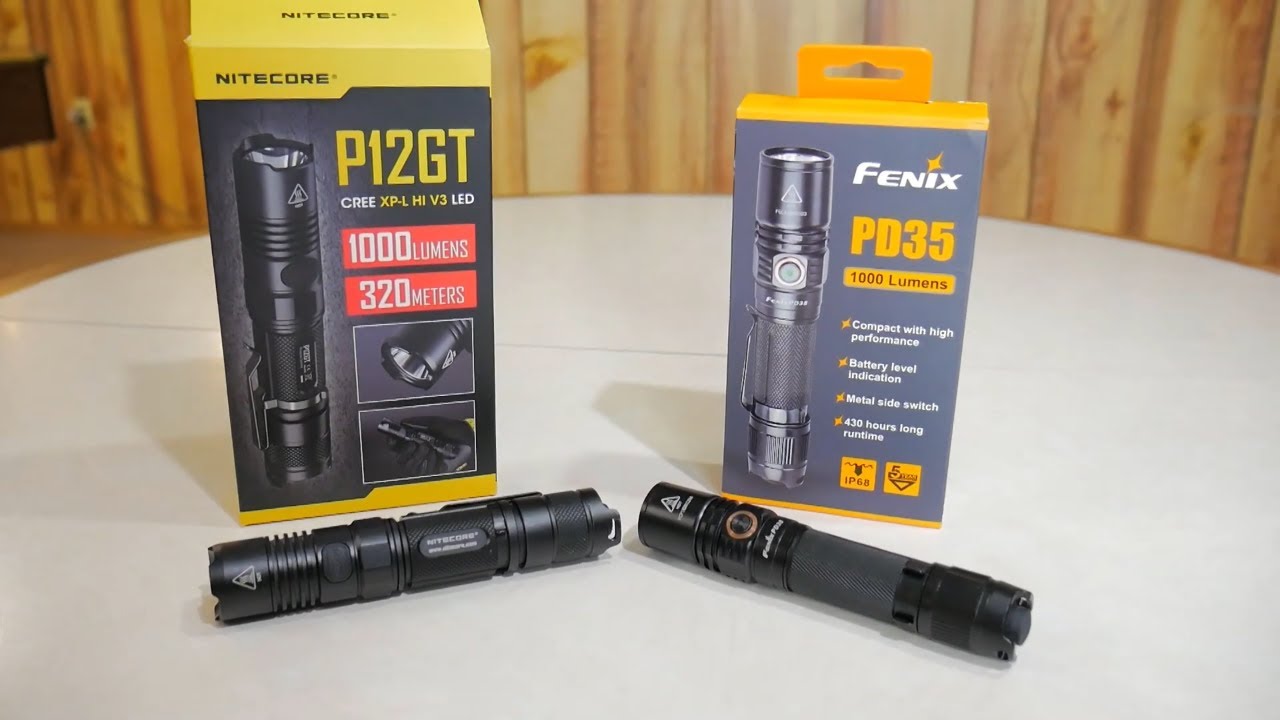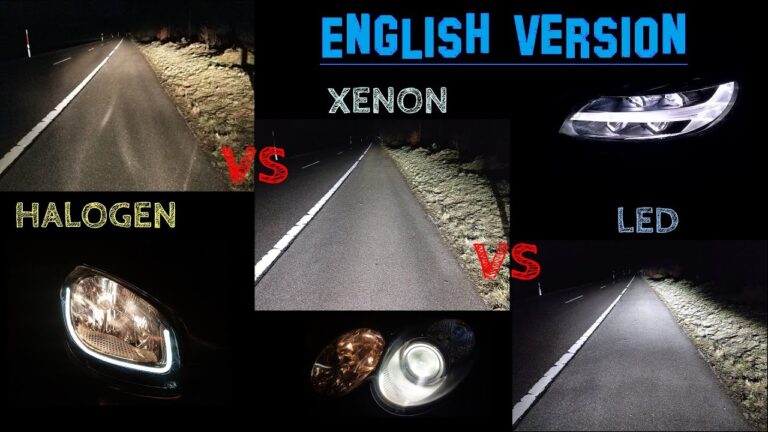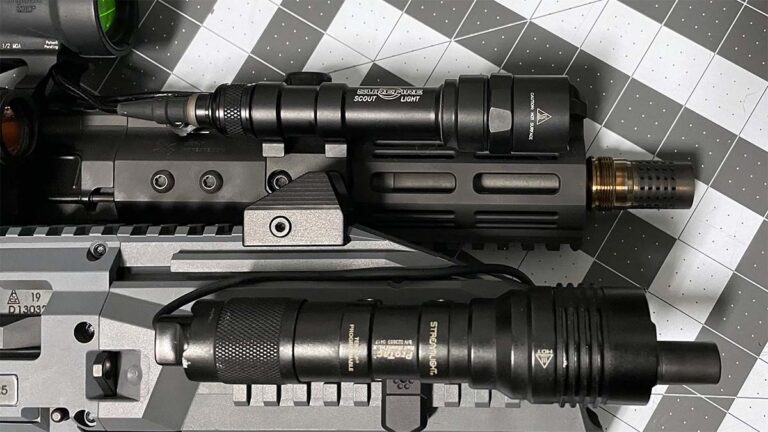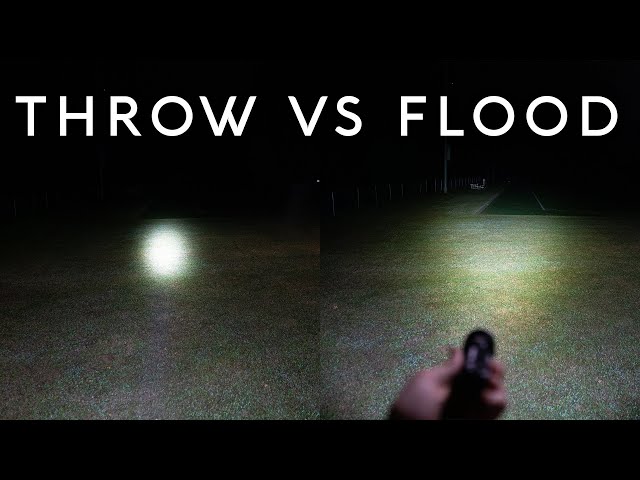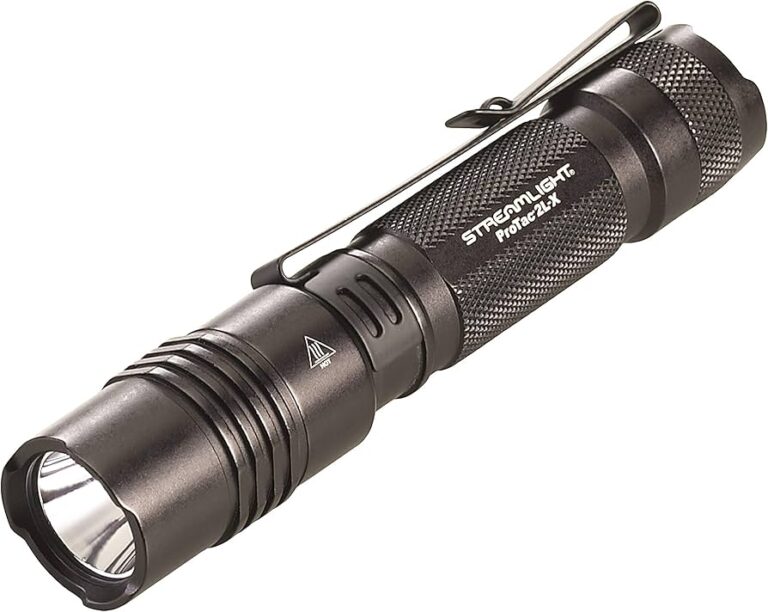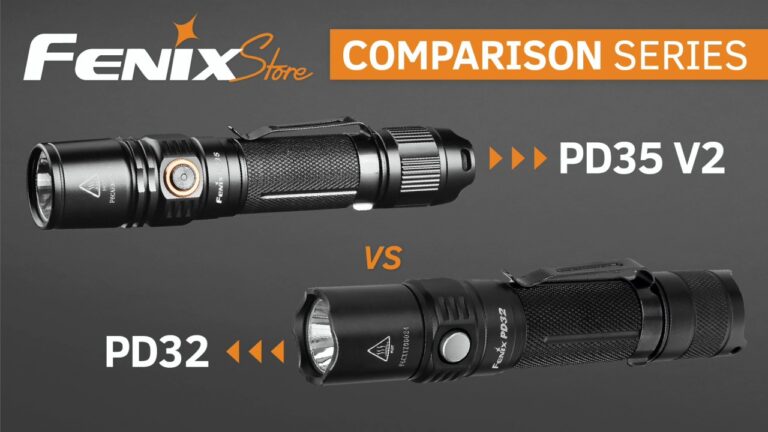Fenix vs Nitecore Flashlights: Which is Best for You?
In the world of flashlights, two brands often stand out for their quality, innovation, and performance: Fenix and Nitecore. This article will explore a comprehensive comparison between these two popular brands, focusing on their key features, performance metrics, and user experiences.
For outdoor enthusiasts, tactical users, or anyone in need of a reliable light source, understanding the differences and similarities between Fenix and Nitecore can help in making an informed choice. We will delve into aspects like brightness, battery life, durability, and user interfaces, providing insights that will assist both casual users and flashlight aficionados in selecting the ideal flashlight for their specific needs.
Table of Contents
- Brand Overview: Fenix and Nitecore
- Flashlight Types and Use Cases
- Performance Metrics: Brightness and Beam Distance
- Battery Life and Charging Options
- Build Quality and Durability
- User Experience and Interface
- Price Comparison and Value for Money
- Warranty and Customer Support
- Conclusion: Choosing Your Ideal Flashlight
- FAQ Section
Brand Overview: Fenix and Nitecore
Fenix Overview
Fenix was established in 2004 and has become a leading player in the flashlight industry, known for its innovative design and reliable performance. The brand focuses on creating high-quality, durable flashlights suitable for various applications, including outdoor adventures, tactical scenarios, and everyday carry (EDC).
Notable products from Fenix include the PD and TK series, with the PD35 being one of the most popular models due to its versatility and performance.
Nitecore Overview
Nitecore, founded in 2007, has made a name for itself through innovation and a wide variety of flashlight designs. The brand emphasizes functionality and has developed numerous series tailored for specific uses, such as the TM series for outdoor adventures and the MH series for versatile, rechargeable options.
Nitecore is recognized for its high-output models, such as the Nitecore TM20K, which boasts an impressive 20,000 lumens, pushing the boundaries of flashlight technology.
Market Presence and Popularity
Both brands have a significant market presence and are favored by outdoor enthusiasts, law enforcement, and military personnel. Fenix is often lauded for its robust construction and reliability, while Nitecore is celebrated for its innovative designs and cutting-edge technology.
The competition between these brands is fierce, making for a dynamic landscape in the flashlight market.
| Brand | Year Founded | Notable Products | Market Segment |
|---|---|---|---|
| Fenix | 2004 | PD35, TK22 | Outdoor, Tactical, EDC |
| Nitecore | 2007 | TM20K, MH12 | Outdoor, Tactical, EDC |
This table provides a clear comparison of key data points regarding the two flashlight brands. Fenix’s longer history in the market, dating back to 2004, has allowed it to refine its products and build a loyal customer base.
Their flagship products, such as the PD35 and TK22, are well-regarded in outdoor and tactical circles. Nitecore, on the other hand, is a newer entrant but has quickly gained a reputation for innovation with powerful offerings like the TM20K.
Both brands target similar market segments, indicating a competitive landscape where consumers can benefit from high-quality options.
Flashlight Types and Use Cases
Tactical Flashlights
Tactical flashlights are designed for self-defense, military use, and law enforcement. Fenix and Nitecore both offer robust tactical models that feature high brightness levels and durable constructions.
Fenix’s TK series, such as the TK22, is designed with tactical applications in mind, offering features like a striking bezel and multiple output modes. In contrast, Nitecore’s P series, including the P20iX, emphasizes versatility with options for strobe modes and high outputs, making them suitable for various tactical scenarios.
EDC Flashlights
Everyday carry (EDC) flashlights are compact, user-friendly lights designed for daily use. Fenix’s E series, particularly the E35, is widely praised for its balance of size and performance, making it ideal for everyday tasks.
Nitecore’s EDC series, including the EDC27, showcases impressive lumens and features tailored for everyday carry, such as a slim profile and multiple brightness levels. Both brands excel in this category, offering options that are both powerful and portable.
Specialty Flashlights (Headlamps, Lanterns)
Both Fenix and Nitecore also produce specialty flashlights, including headlamps and lanterns. Fenix offers models like the HL series, which are perfect for outdoor activities such as camping and hiking.
Nitecore’s lanterns, like the LR series, provide versatile lighting options for extended outdoor use. These specialty devices enhance the utility of both brands, catering to specific user needs and scenarios.
| Flashlight Type | Fenix Models | Nitecore Models | Use Cases |
|---|---|---|---|
| Tactical | TK22 | P20iX | Self-defense, military, law enforcement |
| EDC | E35 | EDC27 | Everyday tasks, portable lighting |
| Specialty | HL Series | LR Series | Camping, hiking, outdoor activities |
The table above effectively outlines the types of flashlights offered by Fenix and Nitecore, along with their respective models and use cases. This comparison illustrates the diversity in flashlight applications offered by both brands.
Fenix excels in tactical and specialty models, while Nitecore stands out in the EDC category with innovative designs. This variety allows users to select flashlights that best fit their specific needs, whether for tactical use, daily carry, or outdoor activities.
Performance Metrics: Brightness and Beam Distance
Brightness Comparisons
Brightness is a critical metric when evaluating flashlights, typically measured in lumens. Fenix flashlights, such as the E35, can emit up to 3,000 lumens.
Nitecore flashlights, like the EDC33, push the boundaries with a maximum output of 4,000 lumens. The choice between the two may depend on specific use cases; for instance, higher lumens are beneficial for search and rescue operations, while moderate outputs suffice for everyday tasks.
Beam Distance Analysis
Beam distance is another vital aspect, indicating how far the light can effectively reach. Fenix flashlights often boast impressive throw distances; for example, the E35 can throw light up to 240 meters.
Nitecore’s models, such as the EDC33, can achieve even greater distances, reaching around 450 meters. This feature is essential for users who require long-range visibility, particularly in outdoor or tactical environments.
Importance of Beam Quality
Beam quality involves not just brightness and distance but also the type of beam produced. A flashlight that combines a focused hotspot with a broad spill is often preferred for versatility.
Fenix flashlights typically offer a well-balanced beam quality, providing both throw and flood capabilities. Nitecore models, especially those with advanced optics, often excel in producing a uniform beam for various applications.
| Model | Max Lumens | Beam Distance |
|---|---|---|
| Fenix E35 | 3,000 | 240 meters |
| Nitecore EDC33 | 4,000 | 450 meters |
This table summarizes the brightness and beam distance of selected models from both Fenix and Nitecore. The comparison highlights the strengths of each brand; while Fenix offers robust performance with a maximum output of 3,000 lumens and a commendable throw distance, Nitecore showcases its prowess with a higher maximum output and extended beam distance.
For users prioritizing long-range visibility, Nitecore may be the preferred choice. However, for those who require reliable performance in various scenarios, Fenix remains a strong contender.
Battery Life and Charging Options
Battery Types Used
The type of batteries used in flashlights can significantly affect their performance and convenience. Fenix flashlights typically utilize rechargeable lithium-ion batteries, such as the 21700 and 18650 types, which offer high capacity and longevity.
Nitecore also employs similar batteries but has models that can run on AA or AAA batteries, providing more flexibility for users who may not have access to specialized batteries.
Charging Methods: USB-C vs. Proprietary
Charging methods vary between the two brands. Fenix often integrates USB-C charging into their flashlights, allowing for easy and accessible recharging.
This feature is particularly convenient for users who regularly charge their devices using USB-C cables. In contrast, Nitecore’s models may utilize proprietary charging systems, which can limit flexibility and require specific cables, though many of their newer models also feature USB-C options.
Runtime Comparisons
Runtime is a critical metric for users who need their flashlights to last through extended periods. Fenix flashlights generally offer impressive runtimes; for instance, the E35 can run for up to 60 hours on lower settings.
Nitecore’s flashlights also provide substantial runtimes, with models like the EDC27 achieving up to 37 hours on low settings. Users should consider their expected usage patterns when evaluating runtime specifications.
| Model | Battery Type | Runtime (Low Setting) | Charging Method |
|---|---|---|---|
| Fenix E35 | 21700 | 60 hours | USB-C |
| Nitecore EDC27 | 18650 | 37 hours | USB-C |
This comparison table illustrates the battery types, runtimes, and charging methods for selected models from both brands. Both Fenix and Nitecore prioritize rechargeable lithium-ion batteries, but Fenix offers a slight edge with its USB-C charging as a standard across many models.
The runtimes indicate that Fenix flashlights can last longer on lower settings, making them ideal for extended use. Users looking for flexibility in battery options may prefer Nitecore, which accommodates both rechargeable and disposable batteries.
Build Quality and Durability
Materials Used in Construction
The materials used in flashlight construction significantly contribute to their durability. Fenix flashlights are typically made from high-grade aluminum, offering excellent strength and resistance to wear.
Nitecore also utilizes durable materials, but their innovative designs sometimes incorporate plastics and composites to reduce weight. This approach can enhance portability, but users may perceive Fenix products as more robust overall.
IP Ratings and Weather Resistance
Both brands provide models with impressive weather resistance, indicated by their IP ratings. Fenix flashlights often boast IP68 ratings, meaning they are dust-tight and can withstand submersion in water beyond 1 meter.
Nitecore also offers competitive ratings, typically ranging from IPX6 to IP68, ensuring that their products can handle outdoor conditions effectively.
Impact Resistance
Impact resistance is another critical aspect of flashlight durability. Fenix flashlights are designed to endure drops from significant heights, with many models rated for impacts up to 1 meter.
Nitecore flashlights also demonstrate strong impact resistance, but the specifics can vary by model. Users seeking rugged designs may lean towards Fenix for its proven track record in durability.
| Model | Materials | IP Rating | Impact Resistance |
|---|---|---|---|
| Fenix E35 | Aluminum | IP68 | 1 meter |
| Nitecore EDC27 | Aluminum/Plastic | IPX68 | 1 meter |
This table provides a detailed overview of the materials, IP ratings, and impact resistance for selected models from Fenix and Nitecore. Both brands demonstrate a commitment to high-quality construction and durability, with Fenix generally offering a more robust aluminum design.
The IP68 rating for both brands suggests excellent water and dust resistance, making them suitable for outdoor use. Users who prioritize durability in demanding conditions may find Fenix to be the more reliable option, though Nitecore’s designs still hold up well in everyday scenarios.
User Experience and Interface
User Interface Design
A flashlight’s user interface is essential for ease of operation. Fenix flashlights typically feature a straightforward interface with a side switch for mode selection and a tail switch for activation.
This design allows users to quickly access different brightness levels and special modes like strobe. Nitecore flashlights often incorporate dual-switch designs, which provide flexibility for tactical use but can require some time to master.
Common User Feedback
User feedback for both brands generally highlights their reliability and performance. Fenix flashlights are often praised for their durability and intuitive operation, while Nitecore users appreciate the advanced features and high outputs.
However, some users report a learning curve with Nitecore’s complex interfaces, which may deter casual users.
Accessibility Features
Accessibility features, such as battery indicators and lockout modes, enhance the user experience. Fenix flashlights often include battery level indicators integrated into the interface, allowing users to monitor their power status easily.
Nitecore flashlights often feature advanced displays that provide real-time information about remaining battery life and output settings, which can be particularly useful in tactical scenarios.
| Model | User Interface | User Ratings | Accessibility Features |
|---|---|---|---|
| Fenix E35 | Single switch | 4.5/5 | Battery indicator |
| Nitecore EDC27 | Dual switches | 4.4/5 | OLED display |
This table summarizes the user interface design, ratings, and accessibility features for Fenix and Nitecore flashlights. Both brands receive high user ratings, indicating overall satisfaction.
Fenix’s single switch design is often seen as more user-friendly, while Nitecore’s dual-switch design offers added functionality at the potential cost of simplicity. The accessibility features, such as the battery indicator in Fenix models and the OLED display in Nitecore models, provide users with valuable information for effective usage.
Price Comparison and Value for Money
Price Ranges of Fenix Products
Fenix flashlights typically range from around $30 for basic models to over $150 for high-end tactical options. Their pricing reflects the quality and durability of the products, making them a sound investment for both casual users and professionals.
The PD36R Pro, for example, retails around $120, offering excellent features and performance in a compact design.
Price Ranges of Nitecore Products
Nitecore flashlights also fall within a similar price range, with entry-level models starting around $25 and premium models exceeding $200. Nitecore’s offerings often emphasize innovation and high output, justifying the higher price points of their advanced models like the Nitecore TM20K, which can cost significantly more due to its exceptional performance capabilities.
Cost-Effectiveness Analysis
When comparing cost-effectiveness, both brands deliver excellent value for money, but their focus differs. Fenix emphasizes reliability and proven technology, often providing products that last for years without issues.
Nitecore, in contrast, often introduces cutting-edge technology, which can lead to a steeper learning curve but also offers impressive performance. Consumers should weigh their priorities between innovation and reliability when deciding which brand to invest in.
| Brand | Price Range | Average Price | Notable Models |
|---|---|---|---|
| Fenix | $30 – $150+ | $95 | PD36R Pro, TK22 |
| Nitecore | $25 – $200+ | $90 | TM20K, EDC27 |
This price comparison table showcases the price ranges and average costs of Fenix and Nitecore products, highlighting their notable models. The pricing reflects the quality and features offered by both brands.
Fenix’s average price is slightly higher, likely due to its focus on durability and reliability. Nitecore’s models cater to users seeking innovative features, often resulting in competitive pricing.
Ultimately, consumers must consider their specific needs and budget constraints when choosing between these two reputable brands.
Warranty and Customer Support
Fenix Warranty Overview
Fenix offers a robust warranty on its flashlights, typically providing a five-year warranty on most models. This warranty covers defects in materials and workmanship, ensuring that users receive reliable support in case of issues.
Fenix is known for its responsive customer service, which can assist with repairs or replacements if needed.
Nitecore Warranty Overview
Nitecore also provides a competitive warranty, generally covering products for a limited lifetime against defects in materials and workmanship. Their customer service is well-regarded, offering assistance in troubleshooting and resolving issues with their products.
This level of support enhances user confidence in their purchases.
Customer Support Comparison
Both brands have established strong reputations for customer support. Fenix users often praise the company’s quick response times and helpful service representatives, while Nitecore customers appreciate the brand’s willingness to assist with any concerns.
This commitment to customer satisfaction is a crucial factor for potential buyers to consider when selecting a flashlight.
| Brand | Warranty Length | Coverage | Customer Support Rating |
|---|---|---|---|
| Fenix | 5 Years | Defects in materials and workmanship | 4.6/5 |
| Nitecore | Limited Lifetime | Defects in materials and workmanship | 4.5/5 |
This warranty comparison table illustrates the lengths and coverage of warranties offered by Fenix and Nitecore, along with their customer support ratings. Both brands provide substantial warranty periods, reflecting their confidence in product quality.
Fenix edges out slightly in customer support ratings, suggesting a more favorable user experience. Understanding warranty details can be crucial for buyers who prioritize reliability and support in their flashlight investments.
Conclusion: Choosing Your Ideal Flashlight
Key Takeaways
Both Fenix and Nitecore offer high-quality flashlights that cater to a variety of needs and preferences. Fenix is known for its reliability and proven technologies, while Nitecore shines with its innovative designs and bright outputs.
By understanding the key features, performance metrics, and user experiences discussed in this article, readers can make an informed decision on which flashlight brand aligns best with their specific requirements. Whether you prioritize brightness, durability, or price, there is a suitable option from either brand to meet your flashlight needs.
Recommendations Based on Use Case
- Tactical Use: Choose Nitecore for advanced features and high outputs.
- Everyday Carry: Fenix offers compact models like the E35 for daily tasks.
- Outdoor Activities: Nitecore’s lanterns and headlamps provide versatile lighting solutions.
Final Thoughts
Ultimately, both Fenix and Nitecore deliver exceptional flashlights that can cater to various users. Assessing your specific needs, preferences, and budget will guide you towards the right choice.
Each brand has unique strengths, so consider what features matter most to you in a flashlight, and enjoy the illumination they provide in your daily life.
FAQ Section
What are the main differences between Fenix and Nitecore flashlights?
The main differences between Fenix and Nitecore flashlights lie in their design philosophies and product offerings. Fenix focuses on reliability and proven technologies, offering robust construction and longer runtimes.
Nitecore, on the other hand, emphasizes innovation and high output, with many of their models featuring advanced technology and impressive brightness levels. Both brands cater to outdoor enthusiasts and tactical users, but their approaches differ, making them suitable for different user preferences.
Which brand offers better battery life?
Fenix is generally considered to provide better battery life across its flashlight models. Many Fenix flashlights can last significantly longer on lower settings compared to Nitecore models.
For instance, the Fenix E35 can achieve runtimes of up to 60 hours, while Nitecore’s similar models, such as the EDC27, usually last around 37 hours on low settings. However, both brands utilize high-capacity lithium-ion batteries, ensuring overall good performance in their products.
How do the warranties compare between Fenix and Nitecore?
Fenix offers a five-year warranty on most of its flashlights, covering defects in materials and workmanship. Nitecore provides a limited lifetime warranty, also covering defects under normal use.
Both brands have strong reputations for customer support and responsiveness, ensuring users can seek help for any issues that arise. The warranty length and terms are important factors to consider when choosing a flashlight brand, as they reflect the manufacturer’s confidence in their products.
Are Fenix flashlights suitable for tactical use?
Yes, Fenix flashlights are suitable for tactical use, with several models designed specifically for this purpose. The TK series, such as the TK22, offers features like high brightness, durable construction, and tactical interfaces.
Many users in law enforcement and military settings have relied on Fenix flashlights for their reliability and performance in demanding situations. Tactical users should consider their specific needs when selecting a model from Fenix or Nitecore.
What types of batteries do Nitecore flashlights use?
Nitecore flashlights primarily use rechargeable lithium-ion batteries, such as the 18650 and 21700 types. However, many Nitecore models are designed to be versatile and can also operate on AA or AAA batteries, providing users with flexibility in their power sources.
This adaptability can be particularly useful in emergency situations where specialized batteries may not be readily available.

